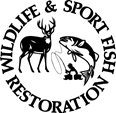Choke Canyon Reservoir 2023 Survey Report
If you have difficulty accessing the information in this document, contact the TPWD Inland Fisheries Division for assistance.
Choke Canyon Reservoir - 2023 Survey Report
Prepared by Dusty McDonald and Spencer Dorsey
Inland Fisheries Division – Corpus Christi District
This is the authors' summary from a 42-page report. For a copy of the complete report, use the download link in the sidebar.
Fish populations in Choke Canyon Reservoir were surveyed in 2023 using electrofishing and in 2024 using spring electrofishing and gill netting. Anglers were surveyed from January 2024 through June 2024 with an access creel survey. Historical data are presented with the 2023-2024 data for comparison. This report summarizes the results of the surveys and contains a management plan for the reservoir based on those findings.
Reservoir Description
Choke Canyon is a 25,989-acre reservoir (averaged 12,626 acres and ranged from 10,126 to 15,818 in 2022- 2024; decreasing to 10,126 acres by July 2024) located on the Frio River in the Nueces River Basin, approximately 80 miles south of San Antonio. Its main purposes are water supply and recreation. The reservoir has a history of substantial water level fluctuations. The substrate is composed primarily of silt, sand, clay, and gravel/rock. Littoral habitat consisted of native aquatic vegetation, periodically flooded terrestrial vegetation, standing timber, hydrilla, and seasonally abundant water hyacinth.
Management History
Important sport fish species include Largemouth Bass, Blue and Channel Catfishes, White Bass, and crappies. Alligator Gar are also an important component to the overall fishery. Recent management efforts have focused on control of nuisance aquatic vegetation, documenting catch of trophy Largemouth Bass and promoting the ShareLunker Program, enhancing the Largemouth Bass population with stockings, and developing an Alligator Gar monitoring program. Staff annually monitored access areas where invasive vegetation could restrict use. The district has worked with the City of Corpus Christi to develop and implement a water hyacinth control program. District staff conducted herbicide treatments of water hyacinth from 2008 through 2015 (926 total acres). Since 2016, water hyacinth herbicide applications have been conducted through private contractors including treatments in 2016 (132 acres), 2017 (566 acres), 2018 (104 acres), 2019 (5 acres), 2022 (310 acres), and 2023 (125 acres). Prior to 2021, angler harvest of all sport fishes had been regulated according to statewide size and bag limits. In September 2021, the regulation for Blue and Channel Catfish changed from the statewide regulation to a 14-inch minimum length, 15-fish daily bag limit.
Fish Community
- Prey species: Gizzard Shad, Redear, and Bluegill were present in moderate abundance. Collectively, these species formed the primary forage base. The majority of prey species collected were adequate size for most predator fish.
- Alligator gar: A notable reduction in harvested Alligator Gar was reported through the mandatory reporting system in recent years, no creel catches were captured; however, a trophy fishery exists.
- Catfish: Blue Catfish abundance remained high and size structure comprised a wide size range of fish with good recruitment. Channel and Flathead Catfish were present in low abundance. Overall directed effort and harvest decreased in 2024 compared to previous years.
- White bass: Abundance of White Bass was low throughout the survey period. Overall harvest had decreased in 2024, similarly effort for White Bass similarly decreased. Surprisingly, those who sought White Bass were highly successful.
- Largemouth bass: Largemouth Bass abundance increased from previous surveys and size structure was primarily comprised of smaller individuals. Growth was excellent and mean age at legal length was 1.8 years. Largemouth Bass were the most sought-after sport fish species in the reservoir; including both tournament and non-tournament anglers. The percentage of angling effort directed at Largemouth Bass and the angler catch rate of Largemouth Bass increased in 2024, however compared to previous years directed effort for Largemouth Bass and all other sportfishes decreased.
- Crappie: White and Black crappies were present within the reservoir and remain important components to the overall sport fishery. The percentage of angler effort directed at crappie and angler catch rate of crappie both increased in 2024, however compared to previous years directed effort for Largemouth Bass and all other sportfishes decreased.
Management Strategies
- Continue to manage sport fish populations under existing harvest regulations.
- Continue to assist the City of Corpus Christi with the water hyacinth control program.
- Monitor access areas with annual nuisance vegetation surveys where water hyacinth and hydrilla could restrict use.
- Assist Texas State University with annual zebra mussel veliger monitoring.
- Stock Lone Star Bass to maintain trophy potential and continue to collect data for the Largemouth Bass trophy database.
- Continue to refine the Alligator Gar monitoring program to track population trends and monitor harvest through the mandatory harvest reporting system, seek support to revitalize interest in the mandatory harvest reporting with new signage.
- Work with State Parks to investigate a new location for a low water boat ramp in times of drought.

Performance Report as required by Federal Aid in Sport Fish Restoration Act Texas Federal Aid Project F-221-M-3 Inland Fisheries Division Monitoring and Management Program